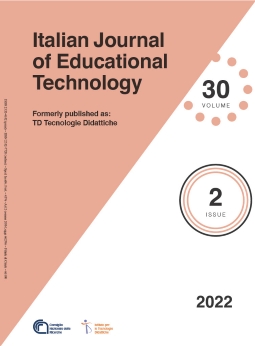Editorial
Main Article Content
Abstract
Writing the editorial of a general issue is usually harder than writing that of a special issue. In fact, the connection between the papers risks to be rather loose, with the only common denominator being the journal scope. This time, however, I was lucky, as four out of the six papers that were accepted for this general issue seem to be connected by a common thread: teachers, their professional identity, and their relationship with technology. I believe there are good reasons for this. More than ever, the crucial role of educators’ competence has come to the forefront, with particular focus on digital competence, including the ability to use technology in an effective way in educational settings, be them face-to-face, hybrid or online.
The main reason for this increased awareness has been under our eyes since the COVID-19 pandemic and the consequent distancing measures have forced educators around the world to use technology to “surrogate” face-to-face teaching. Unfortunately, in most cases, the verb “surrogate” turns out to be the correct one: too often technological environments have been used merely as a (sub-optimal) substitute of the usual physical environment, due to the lack of time and competence needed to redesign teaching from scratch, taking advantage of the full potential of technology. In addition, other important challenges are playing the role of a litmus test for teachers’ need for continuous professional development. One of all is the need to ensure that all learners can develop their potential in a context where students’ cultural diversity is increasing and, at the same time, nationalist sentiments and lack of tolerance continue to fester among the population. Our only chance to build the bases for a peaceful world is through so-called global education, and this makes teachers’ competence in inclusive education and informed use of technology of paramount importance. However, luckily, some institutions have been working in this direction even before the pandemic [...]
Article Details
Section

This work is licensed under a Creative Commons Attribution 4.0 International License.
Authors who publish with this journal agree to the following terms:
- Authors retain copyright and grant the journal right of first publication with the work simultaneously licensed under a Creative Commons CC BY 4.0 Attribution 4.0 International License.
- Authors are able to enter into separate, additional contractual arrangements for the non-exclusive distribution of the journal's published version of the work (e.g., post it to an institutional repository or publish it in a book), with an acknowledgement of its initial publication in this journal.
- Authors are permitted and encouraged to post their work online (e.g., in institutional repositories or on their website) prior to and during the submission process, as it can lead to productive exchanges, as well as earlier and greater citation of published work (See The Effect of Open Access)

